Abstract
In two members of a family (daughter and father) active Epstein-Barr virus (EBV) infections persisted over periods of 4 and 3 years respectively (possibly 10 years in the father). Both had persistent splenomegaly and occasional bouts of unexplained fever but lived otherwise normal lives. The other members of the family (mother and son) were healthy. The titres of antibody to the EBV viral capsid antigen (VCA) and early antigen (EA) were extremely high in the daughter's blood, whereas the titres of antibody to the Epstein-Barr nuclear antigen were low in the daughter's blood and undetectable in the father's. Target cells of the EBV infection that were obtained from the daughter's blood were established in culture with great difficulty and showed increased expression of VCA and EA. Other immunologic investigations in the two patients revealed that the ratio of helper to suppressor T lymphocytes was inverted, natural killer-cell activity was abnormally low, lymphocyte responses to certain mitogens were depressed and there was a serum factor blocking mitogen-induced transformation. The possibility that the patients' unusual susceptibility to EBV infection represented an inherited syndrome (perhaps X-linked) is discussed.
Full text
PDF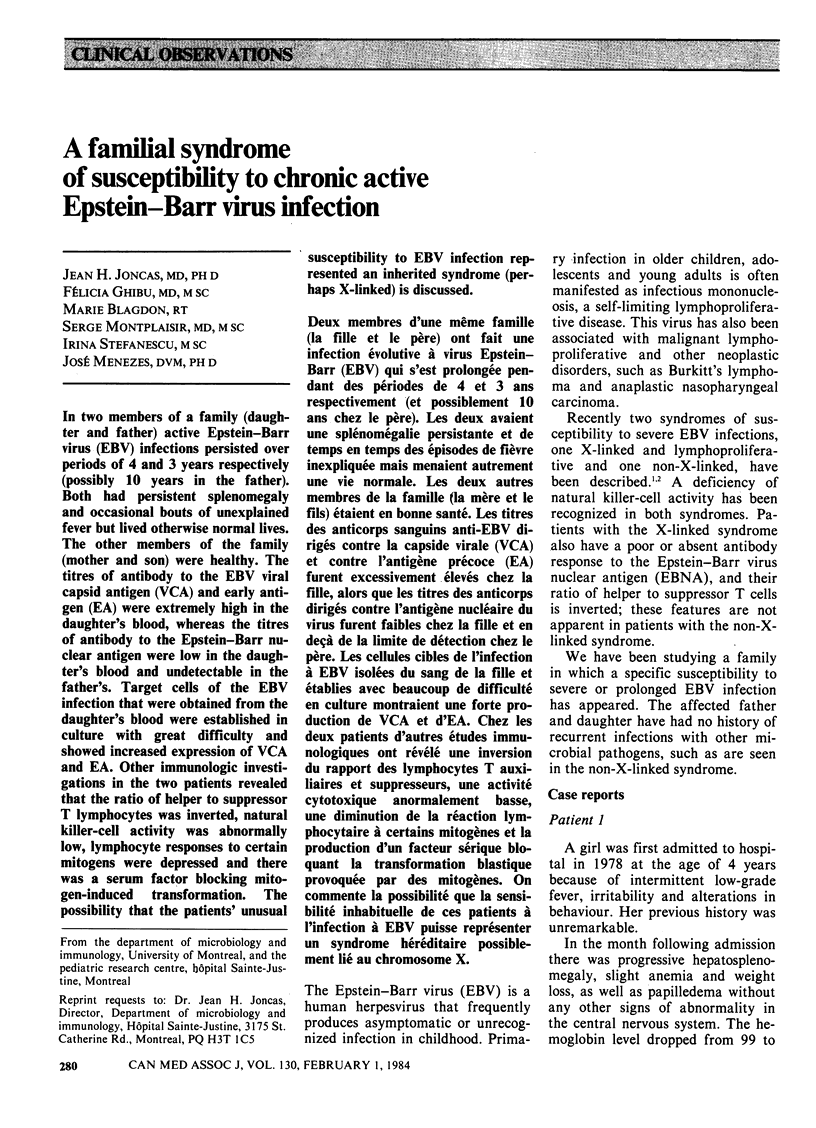
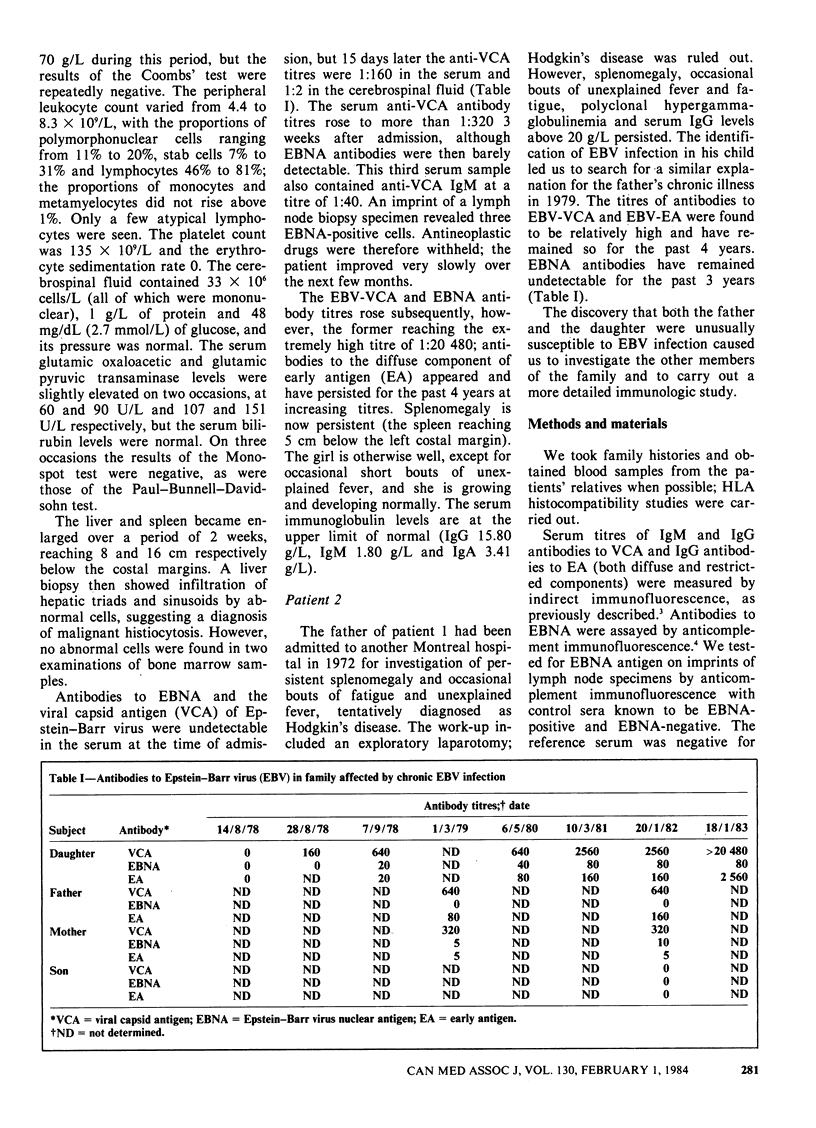
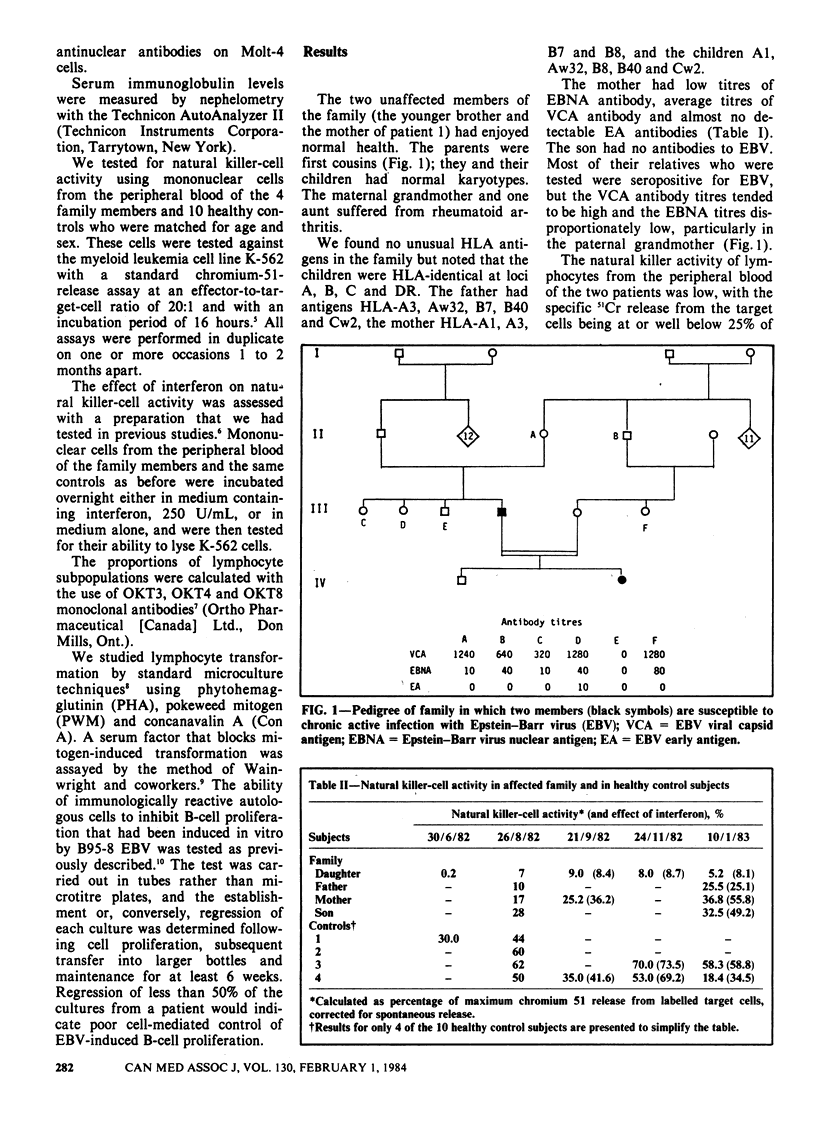
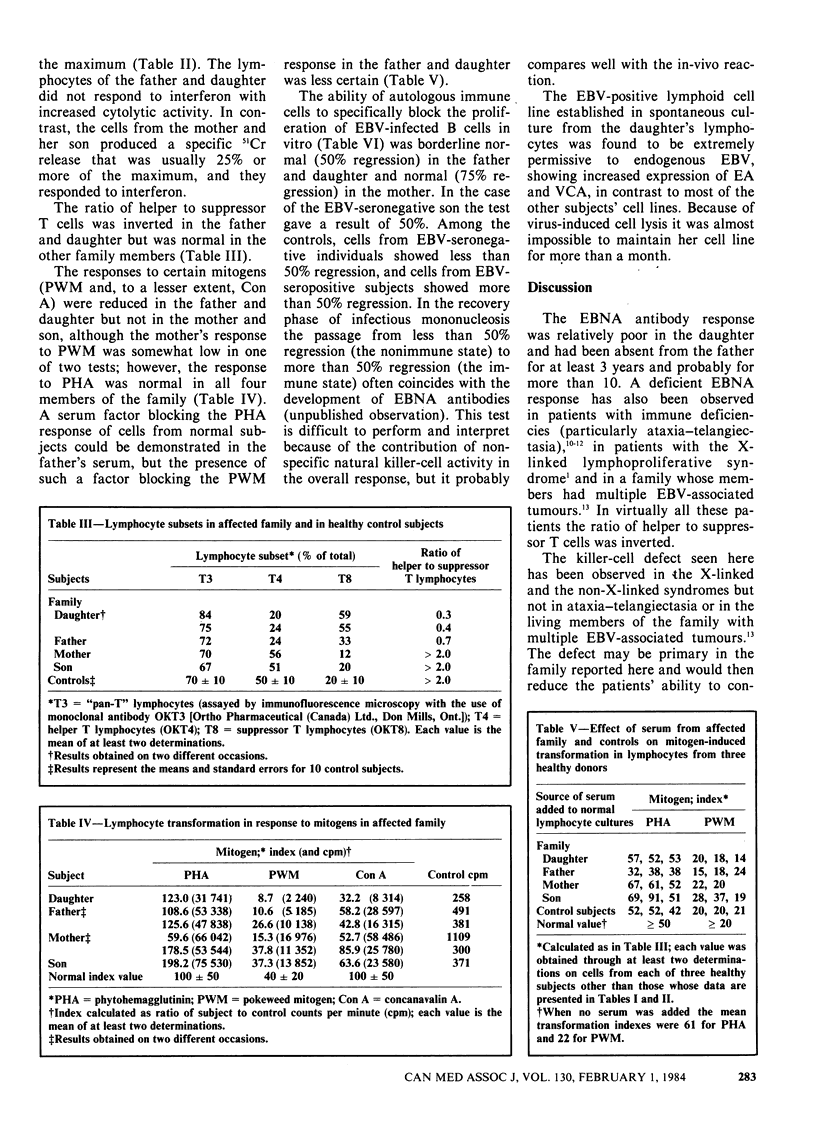
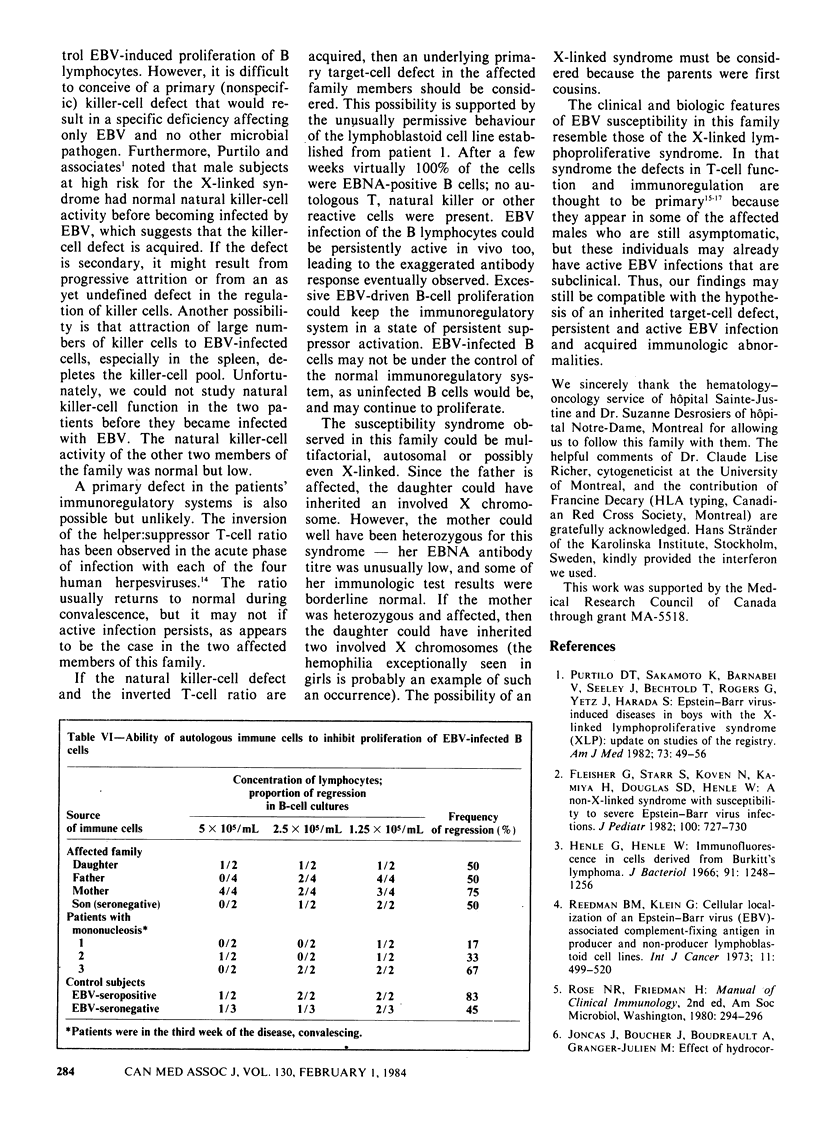
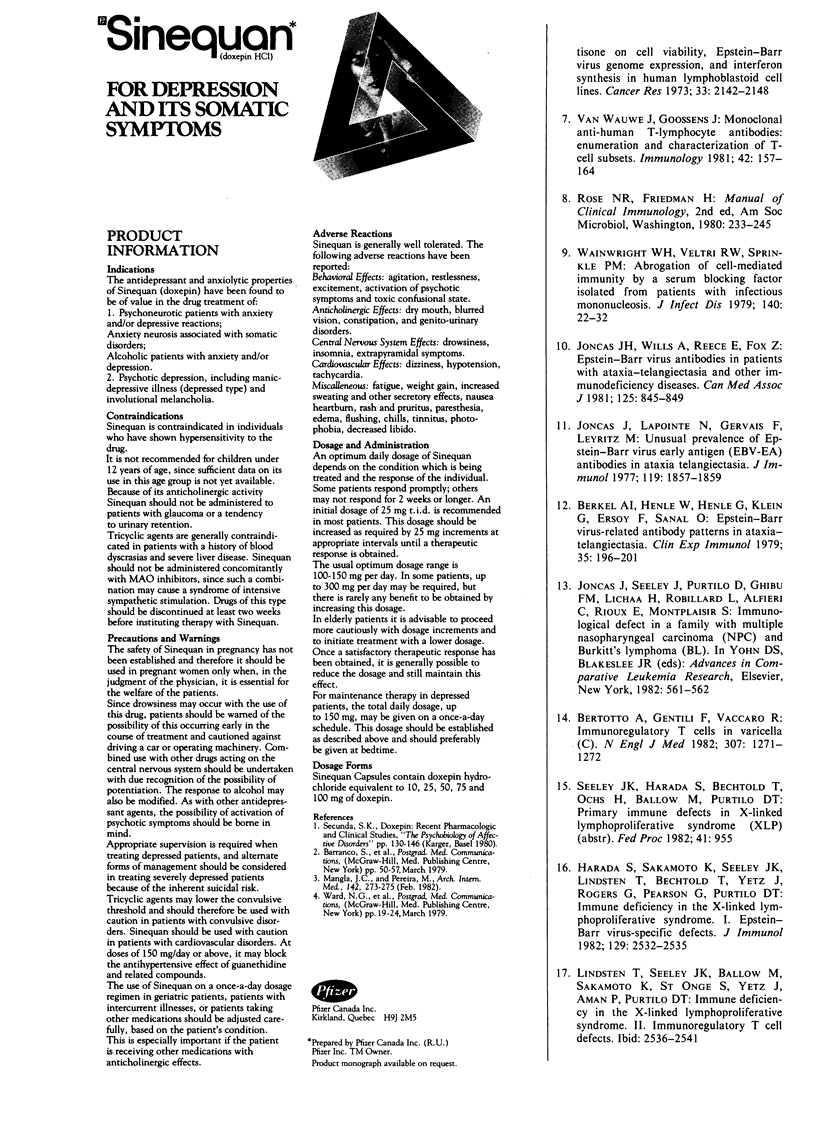
Selected References
These references are in PubMed. This may not be the complete list of references from this article.
- Berkel A. I., Henle W., Henle G., Klein G., Ersoy F., Sanal O. Epstein-Barr virus-related antibody patterns in ataxia-telangiectasia. Clin Exp Immunol. 1979 Feb;35(2):196–201. [PMC free article] [PubMed] [Google Scholar]
- Bertotto A., Gentili F., Vaccaro R. Immunoregulatory T cells in varicella. N Engl J Med. 1982 Nov 11;307(20):1271–1272. doi: 10.1056/NEJM198211113072014. [DOI] [PubMed] [Google Scholar]
- Fleisher G., Starr S., Koven N., Kamiya H., Douglas S. D., Henle W. A non-x-linked syndrome with susceptibility to severe Epstein-Barr virus infections. J Pediatr. 1982 May;100(5):727–730. doi: 10.1016/s0022-3476(82)80572-6. [DOI] [PubMed] [Google Scholar]
- Harada S., Sakamoto K., Seeley J. K., Lindsten T., Bechtold T., Yetz J., Rogers G., Pearson G., Purtilo D. T. Immune deficiency in the X-linked lymphoproliferative syndrome. I. Epstein-Barr virus-specific defects. J Immunol. 1982 Dec;129(6):2532–2535. [PubMed] [Google Scholar]
- Henle G., Henle W. Immunofluorescence in cells derived from Burkitt's lymphoma. J Bacteriol. 1966 Mar;91(3):1248–1256. doi: 10.1128/jb.91.3.1248-1256.1966. [DOI] [PMC free article] [PubMed] [Google Scholar]
- Joncas J. H., Wills A., Reece E., Fox Z. Epstein-Barr virus antibodies in patients with ataxia-telangiectasia and other immunodeficiency diseases. Can Med Assoc J. 1981 Oct 15;125(8):845–849. [PMC free article] [PubMed] [Google Scholar]
- Joncas J., Lapointe N., Gervais F., Leyritz M. Unusual prevalence of Epstein-Barr virus early antigen (EBV-EA) antibodies in ataxia telangiectasia. J Immunol. 1977 Nov;119(5):1857–1859. [PubMed] [Google Scholar]
- Purtilo D. T., Sakamoto K., Barnabei V., Seeley J., Bechtold T., Rogers G., Yetz J., Harada S. Epstein-Barr virus-induced diseases in boys with the X-linked lymphoproliferative syndrome (XLP): update on studies of the registry. Am J Med. 1982 Jul;73(1):49–56. doi: 10.1016/0002-9343(82)90923-8. [DOI] [PubMed] [Google Scholar]
- Reedman B. M., Klein G. Cellular localization of an Epstein-Barr virus (EBV)-associated complement-fixing antigen in producer and non-producer lymphoblastoid cell lines. Int J Cancer. 1973 May;11(3):499–520. doi: 10.1002/ijc.2910110302. [DOI] [PubMed] [Google Scholar]
- Van Wauwe J., Goossens J. Monoclonal anti-human T-lymphocyte antibodies: enumeration and characterization of T-cell subsets. Immunology. 1981 Jan;42(1):157–164. [PMC free article] [PubMed] [Google Scholar]
- Wainwright W. H., Veltri R. W., Sprinkle P. M. Abrogation of cell-mediated immunity by a serum blocking factor isolated from patients with infectious mononucleosis. J Infect Dis. 1979 Jul;140(1):22–32. doi: 10.1093/infdis/140.1.22. [DOI] [PubMed] [Google Scholar]


